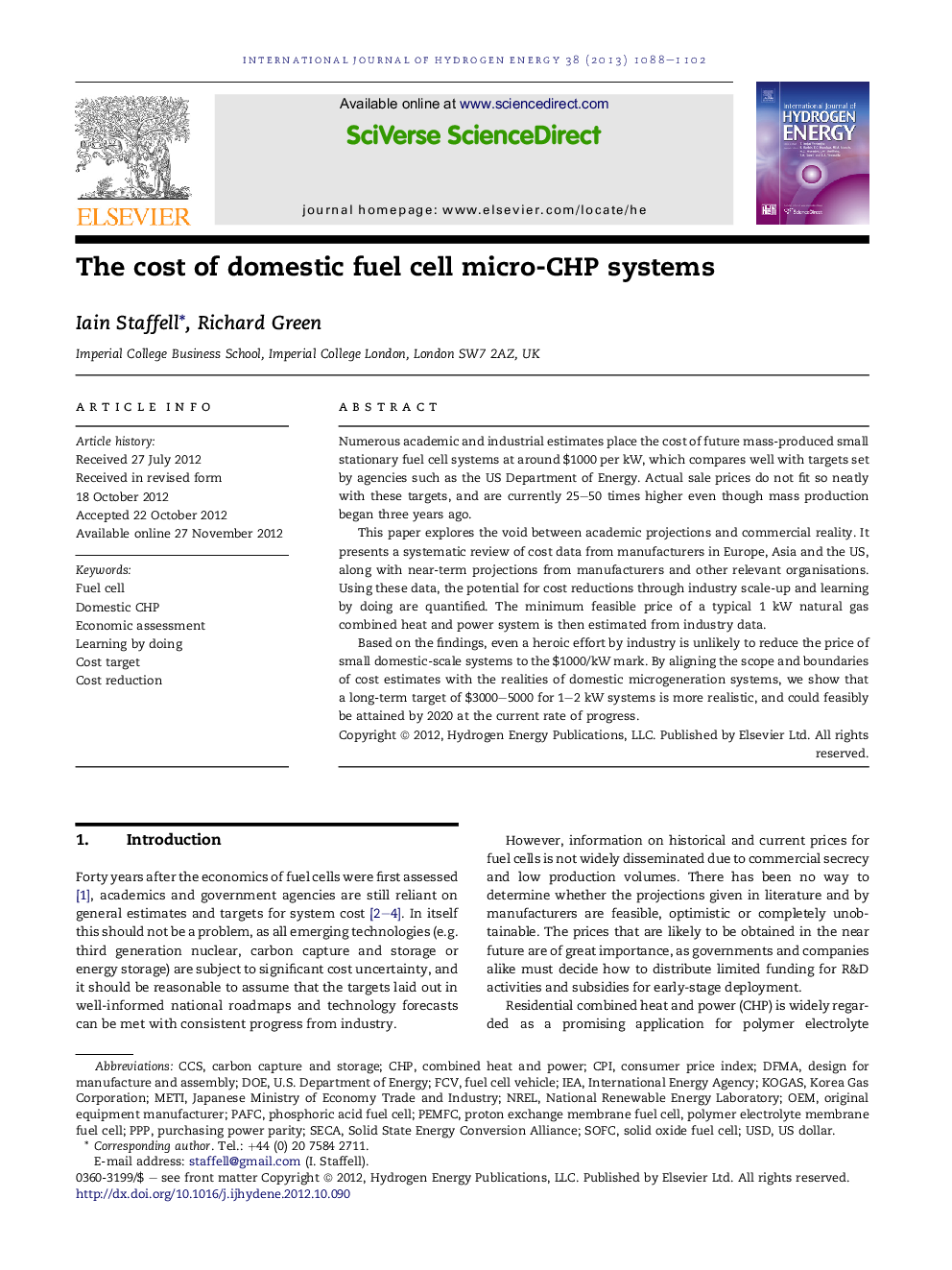| Article ID | Journal | Published Year | Pages | File Type |
|---|---|---|---|---|
| 1282076 | International Journal of Hydrogen Energy | 2013 | 15 Pages |
Numerous academic and industrial estimates place the cost of future mass-produced small stationary fuel cell systems at around $1000 per kW, which compares well with targets set by agencies such as the US Department of Energy. Actual sale prices do not fit so neatly with these targets, and are currently 25–50 times higher even though mass production began three years ago.This paper explores the void between academic projections and commercial reality. It presents a systematic review of cost data from manufacturers in Europe, Asia and the US, along with near-term projections from manufacturers and other relevant organisations. Using these data, the potential for cost reductions through industry scale-up and learning by doing are quantified. The minimum feasible price of a typical 1 kW natural gas combined heat and power system is then estimated from industry data.Based on the findings, even a heroic effort by industry is unlikely to reduce the price of small domestic-scale systems to the $1000/kW mark. By aligning the scope and boundaries of cost estimates with the realities of domestic microgeneration systems, we show that a long-term target of $3000–5000 for 1–2 kW systems is more realistic, and could feasibly be attained by 2020 at the current rate of progress.
► Domestic PEMFC and SOFC CHP systems currently sell for $25,000 per kW. ► Prices from several manufacturers are falling by 15–18% for each doubling in output. ► Targets of $1000/kW cannot be met until every home in the world has a fuel cell. ► Complex balance of plant and auxiliary systems will keep prices above $3500. ► Broad system simplification is the most promising route to further cost reduction.
